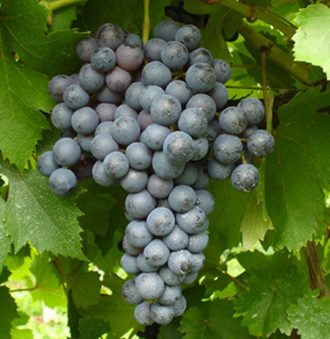Dolcetto Grape
Black Grape

The Dolcetto grape, a black grape, is grown in the regions: Abruzzo, Emilia-Romagna, Liguria, Lombardy, Piedmont, Sardinia and Umbria.
The first written mention of this vine dates back to 1593. The text bearing the name is a document kept in the Dogliani municipal archive. It is an injunction concerning the beginning of the harvest: “ No one ardischi on this side of the feast of San Matteo harvest the grapes and if someone out of necessity or other cause will have to harvest some Dozzetti or other grapes, he will be required to take license from the deputy. ”In 1700, the Marquis Barnaba Centurione sent Dolcetto as a gift to King George II of England and received“ great praises ”. In the dialects of the areas where this grape is grown, the names duzet and duset are still in use.
Today it is widely cultivated in the provinces of Cuneo (Langhe and district of Ormea), of Asti (Colli del Monferrato) and of Alessandria (district of Acqui and Ovada, Tortonese), but also in the piedmont and alpine area of Piedmont, by virtue of its earliness of ripening. It owes its name to the particular sweetness of its pulp, while the wines are presented exclusively dry.
Characteristics of the wine
From the Dolcetto grape a ruby red wine is obtained (possibly with violet reflections), with an intense perfume of licorice, bitter almond, blackberries and cherries and sometimes with floral hints. In the mouth it is dry, bitter, medium-bodied, slightly acidic, quite tannic, soft and harmonious. It is a wine that becomes ready to drink quickly enough, to be consumed therefore within the first year of harvest or in any case after a short aging.


